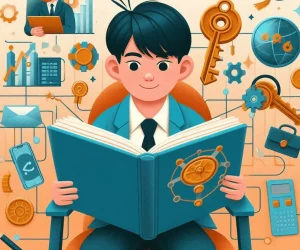
Here at SCM we’ve long lamented strategies that limit the freedoms of difficult students.
—Which include:
Permanently moving their desk nearest the teacher.
Not allowing them to work with certain students.
Restricting their activities, movements, or access afforded other students.
Now, it’s important to point out that this isn’t the same as enforcing consequences, which are predetermined, sharply defined, and time constrained.
In other words, once a student—any student—fulfills their obligation to the consequence, they are welcomed back as a valued member of the class with all rights restored.
Remember, our goal as teachers isn’t to just get through the day. It’s to impact students for a lifetime.
It’s to take students who struggle with behavior and help them change so they no longer struggle. So what’s wrong with limiting freedoms?
1. It labels them.
When you don’t allow some students to work with others, for example, you’re sending the message that they’re incapable.
You’re saying to them that they don’t measure up and that ‘behavior problem’ is who they are. They’re unbridled, even inhuman, and unable to control their emotions.
They, in turn, begin to believe this about themselves—or already do and you’re confirming it. This is demoralizing and devastating to their future and relationships with others.
It also causes more misbehavior, not less.
2. It establishes a static mindset.
A growth mindset is the belief you can improve. You’re not stuck in your current station but instead through hard work and determination can change and better yourself and your circumstances.
Anything, therefore, that communicates otherwise must be eliminated from your classroom. This includes your classroom management approach and attitude toward students.
Your consistent kindness and non-negotiable boundaries are for everyone. This underscores the importance of not taking misbehavior personally, seeking revenge, playing favorites, or using intimidation tactics.
Contrary to much of the current educational thinking, all students must be, and deserve to be, treated equally. Limits, as listed and defined above, are especially egregious and antithetical to a growth mindset.
3. They never get better.
When you tell students that they can no longer play soccer on the playground because they’re too aggressive and can’t control their anger, then they never get better.
Avoidance isn’t a classroom management strategy. What they need are clear boundaries, accountability, and the opportunity to try again—and again and again.
They need close supervision and the willingness of an adult to pull them aside and teach them how to play within the boundaries.
However, they need your trust most of all. They need to be shown post-consequence through your willingness to put them in any learning group that you believe in them.
Drip, Drip, Drip
The lessons learned from knowing exactly what is expected, and being held strictly accountable to those expectations, over time, if given the opportunity to learn from mistakes, changes behavior.
Now, sometimes it takes you as the leader they like and admire showing in greater detail what is and isn’t okay. It takes vigilant supervision and decisive enforcement.
It takes your belief in their capacity to grow and improve and change no matter their past, how they grew up, or the sins of those around them.
It’s the daily, consistent drip, drip, drip of trust, accountability, and learning. It’s you saying, “You can do this. I believe in you.”
That makes the difference.
PS – My new book Inspire, which describes the principles you need to transform student behavior and learning, is now available.
If you haven’t done so already, please join us. It’s free! Click here and begin receiving classroom management articles like this one in your email box every week.





More Stories
One Quote From Each Professor That Perfectly Sums Up Their Personality
New ED-Commissioned Study on ESEA Provisions that Protect Students
Lisa Nielsen: The Innovative Educator: 5 Pandemic Learning Gains